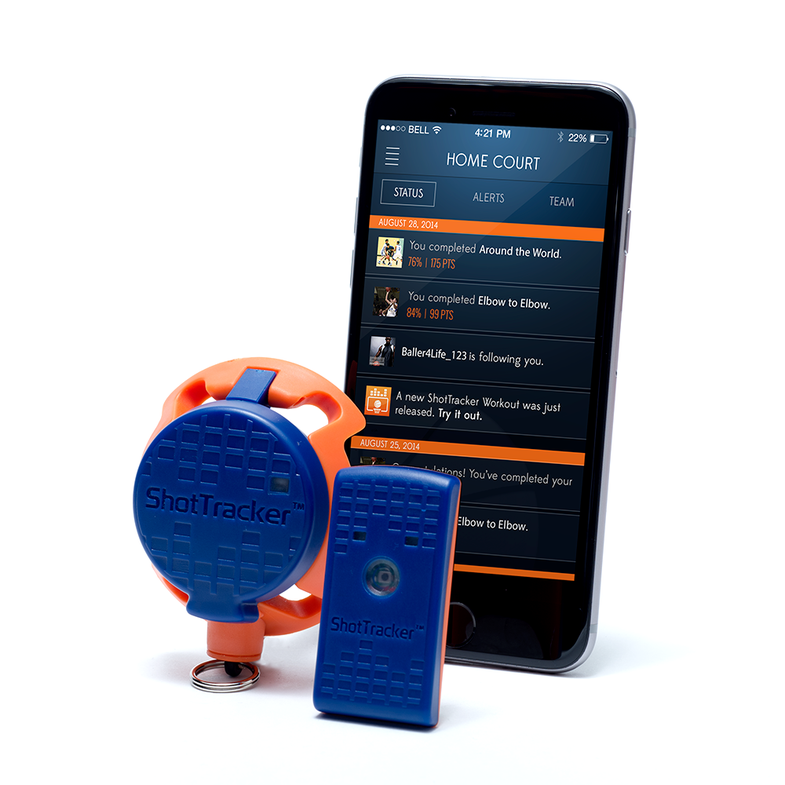Wireless And Wearable Sensors To Track Your Basketball Skills
Players and coaches can monitor shots and create individualized workouts.

We may earn revenue from the products available on this page and participate in affiliate programs. Learn more ›
Despite my being over six feet tall, basketball was never quite my sport—all that running. But while technology may not be able to make me faster, it can potentially help me improve my free throws in the form of ShotTracker.
A combination of two wireless sensors and a pair of smartphone apps, the $149 ShotTracker system can analyze your shots and help you figure out what you’re doing right and where you could use some improvement. One sensor attaches to any basketball net, while the other goes in a wristband or shooting sleeve on your shooting arm—both contain motion sensors and talk to your iPhone or Android phone via Bluetooth. The sensors are not only smart enough to tell which shots you make and which you miss, but they can also ignore any movements not directly related to shooting—which is good for a sport that involves a lot of dribbling, passing, and faking. However, you’ll have to spend some time training the ShotTracker to your own particular shooting style before you can get the most out of it.
Players can use the app to view their shot statistics in real time, as well as setting up workouts and even getting a map of where exactly on the court they’re having trouble. And because half the fun of sports is all about competition, they can line themselves up against friends and teammates.

ShotTracker app
ShotTracker also provides a separate app for coaches, which lets them get information about all of their players. That can help them figure out which players need which specialized drills or workouts, and give them the opportunity to provide individual analysis and feedback as well as track their players progress in a more quantifiable manner. That could make it a lot easier for coaches to focus on specific players, rather than adopting a one-size-fits-all approach.
Technology has become a far more welcome presence in sports in the last few years, especially since the rise in popularity of mobile devices. Baseball players and coaches use smartphones to chase the perfect swing, football coaches use tablets to store their plays, and plenty of even us non-athletes use our iPhones to train for races, work out and generally stay in shape.